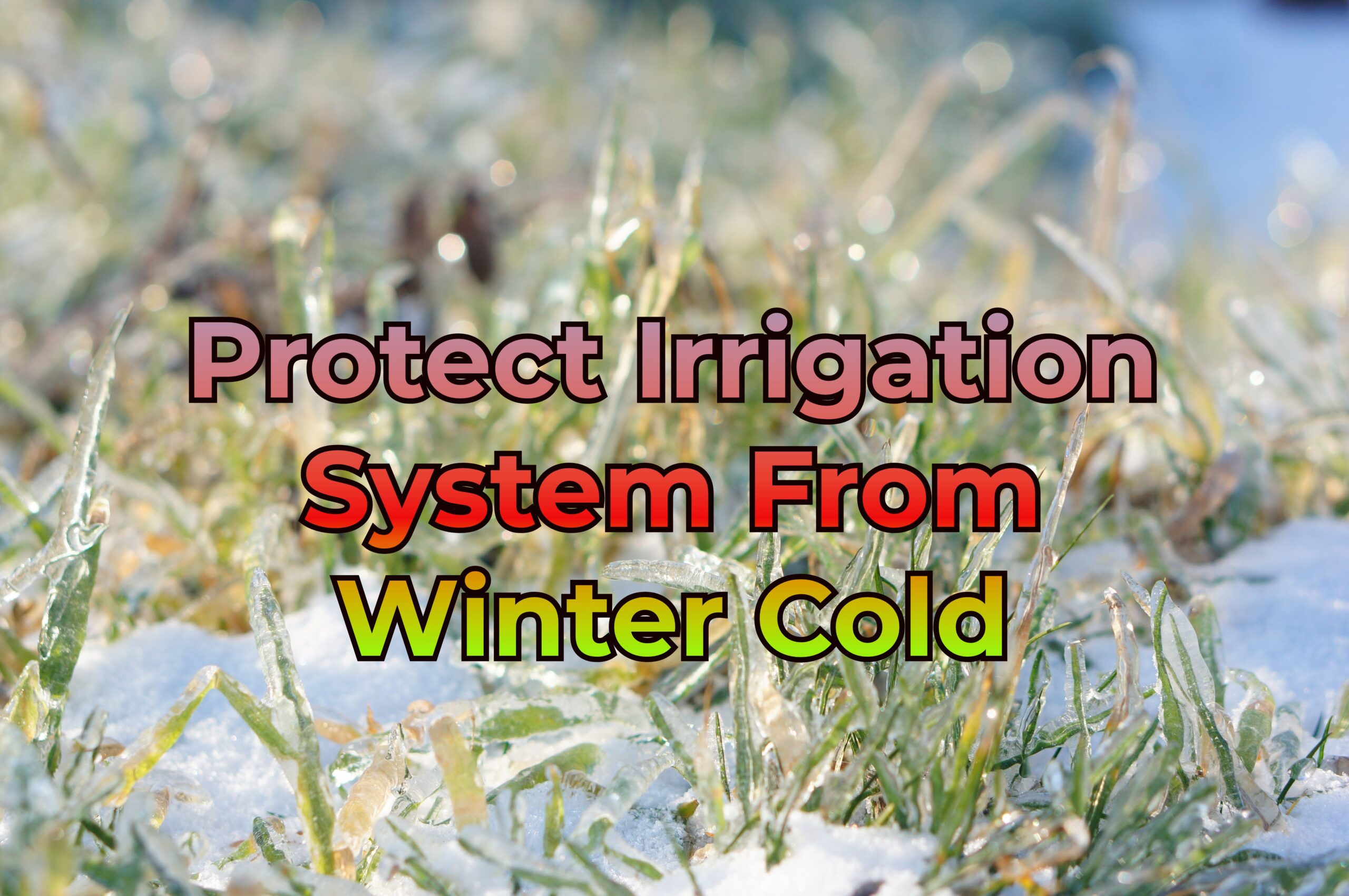
Each year, winter brings a halt to irrigation operations. Failing to winterize your irrigation system can result in significant damage, leaving you with costly repairs when the heat of the next growing season arrives.
Winter cold can harm electronic components like sensors and controllers and damage hoses, pipes, and other essential parts of your system.
In this post, I’ll outline the proper steps to protect your irrigation system—whether it’s a sprinkler, drip system, or another type—from winter’s chill.
So, let’s dive in.
Shut Off The Water Supply
The first thing you have to do is shut off the main water supply pipe connected to the irrigation system.
Locate the shut-off valve and turn it on to prevent residual water in the pipes from expanding when it freezes.
Also, be sure to drain any remaining water from the pipes as well after closing the main valve.
Blow Out The Pipes
Use an air compressor to blow the excess water into the hose.
Connect the compressor to valves and slowly release short bursts of air to force out any trapped moisture.
Work methodically from the valves closest to the water source to the valves farthest away to put.
Drain and Disconnect Hoses
To protect hoses from cold, disconnect all the hoses attached to the main pipe or outdoor spigots.
Failing to disconnect water left in hoses can result in freezing during cold snaps, causing fittings and faucets to crack from the pressure. So coil up and store them in a dry location like a garage or shed so they are protected from cold.
To protect them from the cold. Install hose bib covers on the faucets to prevent freeze damage to the fixtures.
Drain and Store Sprinkler Heads
If you are using a metal sprinkler, it’s advisable to store them to allow for proper drying.
Remove all sprinkler heads from risers or pipelines. Tip heads upside down to allow excess water to escape from the sprinkler. Thoroughly dry both the head and riser pipe before storing.
To prevent moisture re-entering the pipeline, place sprinkler heads and cap or cover the ends of riser pipes.
Store sprinkler heads in a cool, dry location until the next season.
Insulate Control Valves
Insulation acts as a barrier between metal valves and cold air. Use polystyrene insulation covers or bubble wrap to prevent freezing.
Pipe insulation or heat tape also helps shield main pipes from the elements.
Program the Controller
Irrigation controllers may not function well after the winter.
To avoid accidental activation of the system during freezing weather, disconnect controller power supplies and batteries.
Program watering days to skip the winter months according to your climate.
Store Water Timers Indoor
Water timers don’t work well in the cold, freezing climate. So it is better to remove and empty the water inside the timer and keep them in the dry, hot area (indoors).
Even the manufacturers don’t cover frost damage under warranties, making it crucial to ensure you don’t have to buy a new one at the beginning of the next watering season.
Replacing the End Caps
It is better to cap off the end of the irrigation line so no bugs can crawl in during the winter and block the pipe.
Inspect Components
Before storing, check every component in the irrigation system.
Test electronic controls and timers to ensure proper programming and function. Addressing minor repairs now prevents this.
Inspect every component, from pipes to timers, for damage before storing them for winter.
Use Lubricants
During cold weather, O-rings, gaskets, and washers can get hardened, leading to leaks.
Using a drop of silicone-based lubricant keeps them soft and pebbles.
Add Covers
It is important to cover the irrigation openings.
Use hose-end plugs to cover open hoses and end fittings on irrigation systems. Keep the end caps loose enough that water from condensation can drain over the winter.
Final Thoughts…
With proper preparation, you can protect your irrigation system from the harsh effects of winter.
Proactively winterizing saves the expense of emergency repairs or new equipment costs before you restart your system in spring.
Make winter maintenance a part of your annual routine to keep your irrigation system operating efficiently, enhancing the health and beauty of your landscape for years to come.

Leave a Reply